Following a report highlighting the challenges facing the small- to mid-box industrial and logistics sector, Potter Space and Property Week assembled a panel of industry experts to discuss key issues such as the shortage of mid-box supply, planning hurdles to development and improving the sector’s public image.
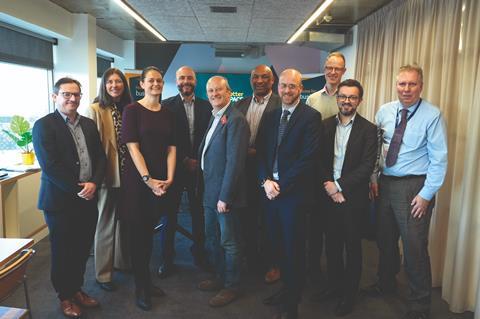
Panel of experts
- Clare Bottle, chief executive, UK Warehousing Association
- Maria Dunn, head of development policy, Birmingham City Council
- Richard Hickman, director of planning, St Modwen Logistics
- Kevin Mofid, head of EMEA industrial and logistics research, Savills
- Mark Powney, director, economics, Savills
- Jason Rockett, managing director, Potter Space
- Andrew Saunders, contributing editor, Property Week (chair)
- Jonathan Walker, head of cities and infrastructure policy, Logistics UK
- Paul Webb, project principal, Mott MacDonald
- Dr Tony West, knowledge transfer manager, Brownfield Research and Innovation Centre, University of Wolverhampton










The industrial and logistics (I&L) sector generates £124bn gross value added (GVA) for the UK economy every year and, because of changing consumer habits and the boom in ecommerce, has been one of the standout success stories for property investors in recent times.
But while much of the attention has been focused on big boxes and giant logistics parks, the majority of I&L activity on the ground derives from small and medium-sized enterprises in smaller premises, with no less than 95% of businesses in the sector operating out of small to medium-sized warehouses of less than 100,000 sq ft, classified as small- to mid-box.
Those are some of the key findings in a report by Potter Space and Savills, entitled ‘Big Things in Small Boxes’. The sub-100,000 sq ft market, the report concludes, is an increasingly important part of logistics infrastructure but is poorly understood by the public and national and local government, and consequently struggles to get the planning and policy attention it deserves.
Property Week, in association with Potter Space, gathered together a group of senior figures from across the industry to highlight how the sector can tackle these challenges head on and forge a brighter and more prosperous future for the small- to mid-box sector.
The small- to mid-box sector is constrained by chronic lack of supply. Insufficient land and competition from higher-profile sectors such as residential, has led to demand for sub-100,000 sq ft warehousing being suppressed by 38% nationally, according to the report. Locally, suppressed demand can be much higher, with peaks of 166% in Crawley, Sussex, 101% in Leicestershire and 57% in Birmingham – part of the famed ‘golden triangle’ of the Midlands.
“Suppressed demand means demand that is lost,” noted Mark Powney, director, economics, at Savills. “And demand which is lost means lost investment, lost jobs and lost benefits to the wider economy. Beyond the lost investment and jobs, the consequences are that businesses cannot run efficiently or maximise their profits.
“The UK has one of the weakest economies in the G7, with one of the lowest labour productivity metrics,” he added. “If you have an economy with high labour productivity, you can pay higher salaries, which means more tax receipts that can go into essential services. As part of that loop, one of the most productive sectors is industrial and logistics. If we want to improve that key economic factor, we need to allow growth in the most productive parts of the economy, such as industrial and logistics.”
Suppressed demand across the small-to mid-box sector particularly stifles SMEs, preventing otherwise strongly performing businesses from growing and dampening national productivity.
Jonathan Walker, head of cities and infrastructure policy at Logistics UK, said: “If companies aren’t able to vacate their existing premises because they can’t find somewhere new, we’re blocking new entrants from growing.”
This situation is further exacerbated by growing interest from larger multinational brands for smaller warehouses in more urban locations, as operational bases and last-mile hubs. “It’s almost the opposite of a ripple effect through the system, in that a company that might be desperate for space actually can’t find it, because that space is already occupied or isn’t being built,” Walker added.
Another problem caused by suppressed demand is that smaller businesses are forced to lease larger units, hoping to grow into them, rather than scaling up naturally, explained Richard Hickman, director of planning at
St Modwen Logistics. “We are seeing business taking on bigger units to grow into the space over a longer period of time, because the confidence isn’t there that the ideal space will be created or made vacant in the future,” he added. “They are committing to higher rents for larger units than they ideally need.”
The report found that in square footage terms, 68% of new I&L developments were big-box, which adds up to a serious bottleneck in sub-100,000 sq ft space for companies wishing to expand. Jason Rockett, managing director at Potter Space, asked: “How do you plan if you can’t plan for your growth? If you look at the long-term outlook, there is still that suppressed demand, because it takes a certain amount of time to build a property – from the get-go, it’s 18 to 24 months to accommodate a business. It is a major restriction on business and how they expand, and prevents certainty.”
Many in the room felt that in the planning system, I&L generally – and the small- to mid-box market, in particular – was regarded as a Cinderella sector, and despite the government’s recent call for evidence in freight logistics and planning, there is still a long way to go to change that.
If companies can’t vacate their existing premises because they can’t find somewhere new, we’re blocking new entrants from growing
Jonathan Walker
The research found there were regions of the UK where even a doubling of supply would only just meet the demand for sub-100,000sq ft space; but given the focus on housing above all else at a national level, development of that much new I&L space is unrealistic.
Maria Dunn, head of development policy at Birmingham City Council, said there was a “skew in national planning policy towards the delivery of much-needed homes”, which can leave small- and mid-box developments down the priority list for local authorities.
“One of the big challenges for us is the pressure for residential development,” she said. “For example, in the city, particularly core inner-city areas, we are seeing pressure for some of our employment space to become residential and in terms of the way policy is set up, there is a lot of focus on the delivery of housing. There is the housing delivery test, which may or may not stay, which creates a big emphasis on housing.”
Core infrastructure issues
Core issues surrounding the UK’s creaking infrastructure and road networks also need to be resolved, according to Paul Webb, project principal at Mott MacDonald.
Highlighting traffic issues in the historic industrial Black Country region, which was visible from the 21st floor of Birmingham city centre’s Alpha Tower where the panel met, he said: “There may be all the space in the world that is suitable for growth, but we still have to work out the infrastructure interventions and get brave enough to say what those interventions might have to be.”
Rockett argued that a “joined-up” approach was needed, rather than positive discrimination, and one that recognised the inter-relation between small- to mid-box, big-box and residential requirements.
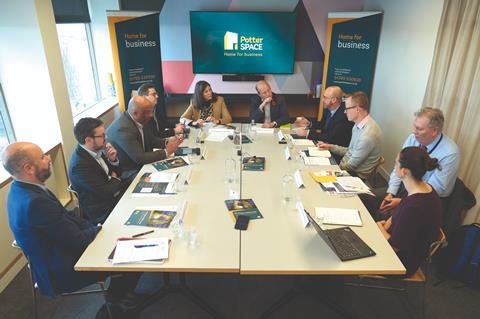
“You don’t need just one or the other,” he said. “If you have got residential, where’s the employment? We don’t need to call for preferential treatment for small- to mid-box, we need to put forward the case for considering them alongside big-box schemes, or residential, and siting these together.”
Kevin Mofid, head of EMEA I&L research at Savills, championed reform on how decisions are made about which locations are suitable to be classified as employment or residential land.
“If you look at any big conurbation, most of the industrial land is located around canals or railways,” he said. “If you were starting again today, where would you build these facilities? I don’t think you would be building them by the canal, that’s where the residential developments want to be, so you have some amenity and greenery. The locations that are deemed industrial or employment ones are a quirk of history that we are struggling to address moving forward. We need to be considering where are the actual ideal locations for these types of building?”
Dr Tony West, knowledge transfer manager for the Brownfield Research and Innovation Centre (BRIC) at the University of Wolverhampton, pointed out that in many regions, there are brownfield sites that could be put to I&L use.
What used to take place on the high street now happens in warehouses. The sector is fast evolving, and we need to tell that story
Clare Bottle
“We [BRIC] have an index of just over 2,000 locations across the Black Country, and about 1,000 of them are suitable for industrial use,” he said. “Our industrial heritage means that we do have a supply of small locations [across the region].”
Dunn agreed that it can be a challenge to find space for I&L development, and that while brownfield sites could be a good option, many of these smaller heritage sites had also been prioritised for residential use.
“As a council, we do struggle with finding and allocating the smaller sites,” she said. “While there is lots of brownfield land around, bringing that forward can often be slow because of the remediation that is needed. On top of that, there is a lot of grant funding available to bring that land into residential use, rather than for employment use.”
Outdated perceptions
Another major battle faced by small- to mid-box developers is overcoming the outdated negative public perception of warehouses, which are often regarded as dirty places that generate unwelcome local HGV traffic and provide low-skilled jobs: a perception that can feed into the political debate and even into planning meetings.
Clare Bottle, chief executive of the UK Warehousing Association, urged the sector to work harder to explain to the public, politicians and planning authorities how crucial I&L is to modern everyday life.
“Part of the exciting story about what is going on in warehousing, and part of what is driving demand for big-box and small- to mid-box space, is that more activity is happening in warehouses that didn’t used to,” she said.
For example, she highlighted that a present bought on Amazon would be gift wrapped in a warehouse, while a T-shirt design is also likely to be printed at the warehouse that distributes it, rather than in the factory where it was made.
With an election and a possible change of government on the horizon, the UKWA is making 2024 the Year of the Warehouse. Bottle added: “What used to take place on the high street now happens in warehouses. The sector is fast evolving, and we need to tell that story.”
Hickman agreed that “the misperception of the sector is huge”. He added: “The sector has changed massively in recent years, especially in terms of the range and variety of jobs that are being created. There are so many positive aspects, but what matters is how it is perceived by communities and planning authorities.”
There is also an urgent need for more hard facts to support that positive narrative, according to Mofid: “The government doesn’t know how much warehousing there is in the UK. In terms of its visibility to government, logistics simply doesn’t exist in the data.”
There isn’t even a specific SIC code (the classification system for economic activity used by government departments), he pointed out. “If you look at the SIC codes, logistics is a myriad of different things – it’s education, employment and transport. So who in government are you actually trying to influence?”
In summary, the sub-100,000 sq ft I&L market is an unsung hero of the UK’s economic infrastructure with huge potential to boost growth, drive job creation and deliver strong returns for investors. But its importance needs to be better evidenced and understood at a national level if it is to earn the priority in planning and policy decisions that it deserves.



























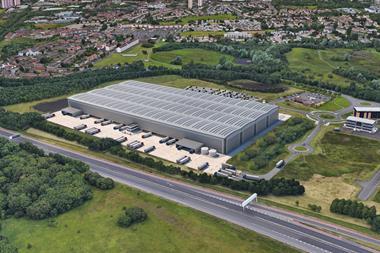
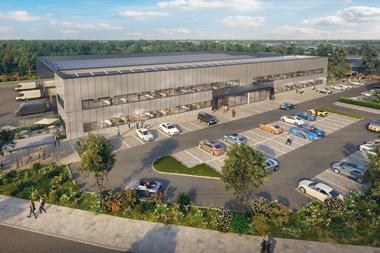


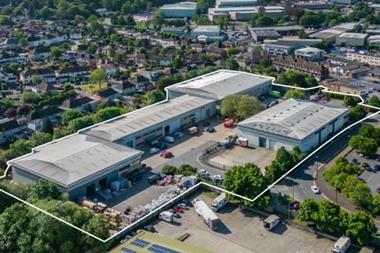

No comments yet